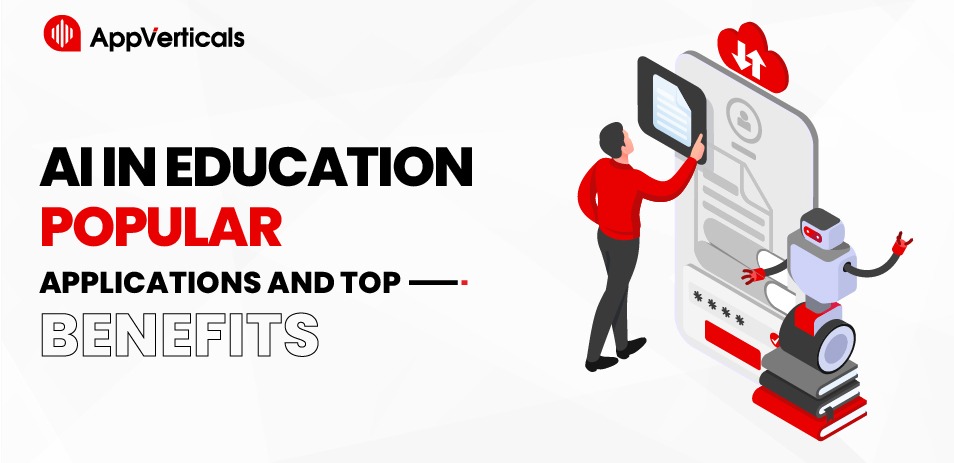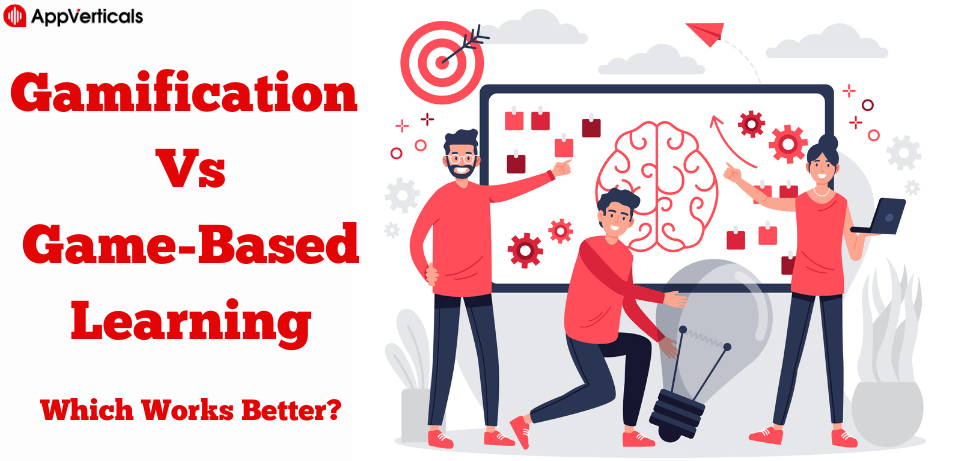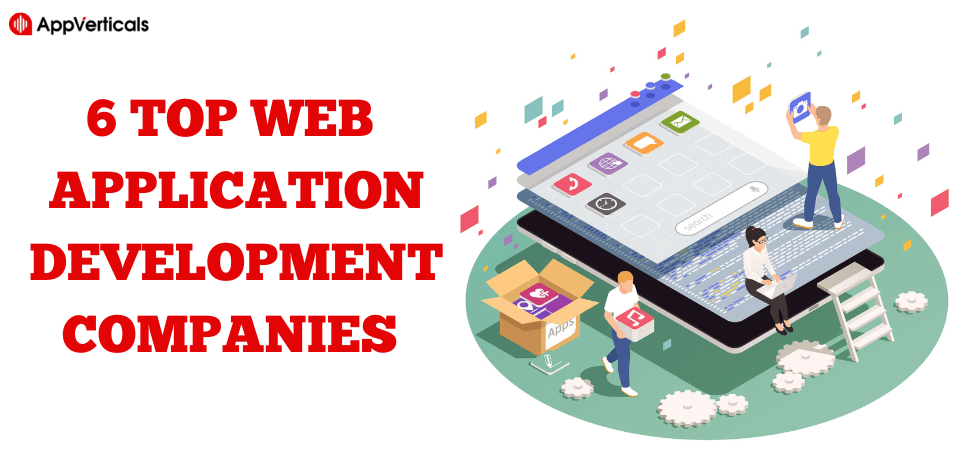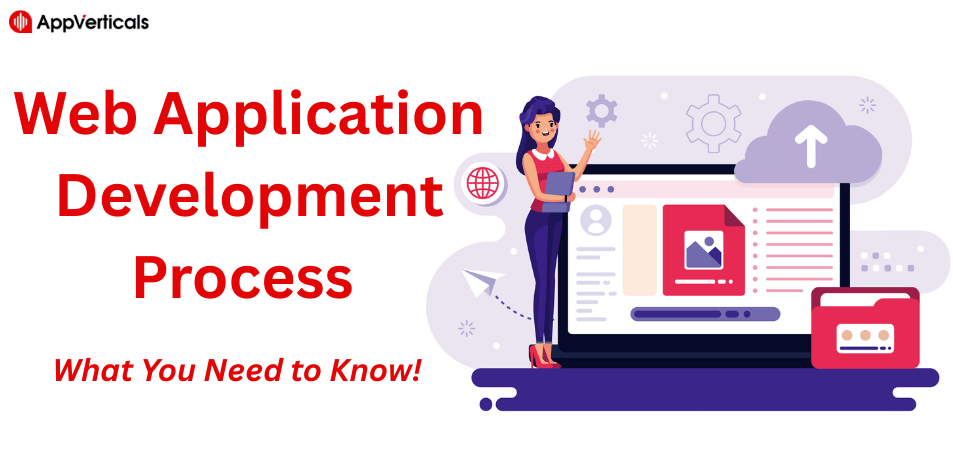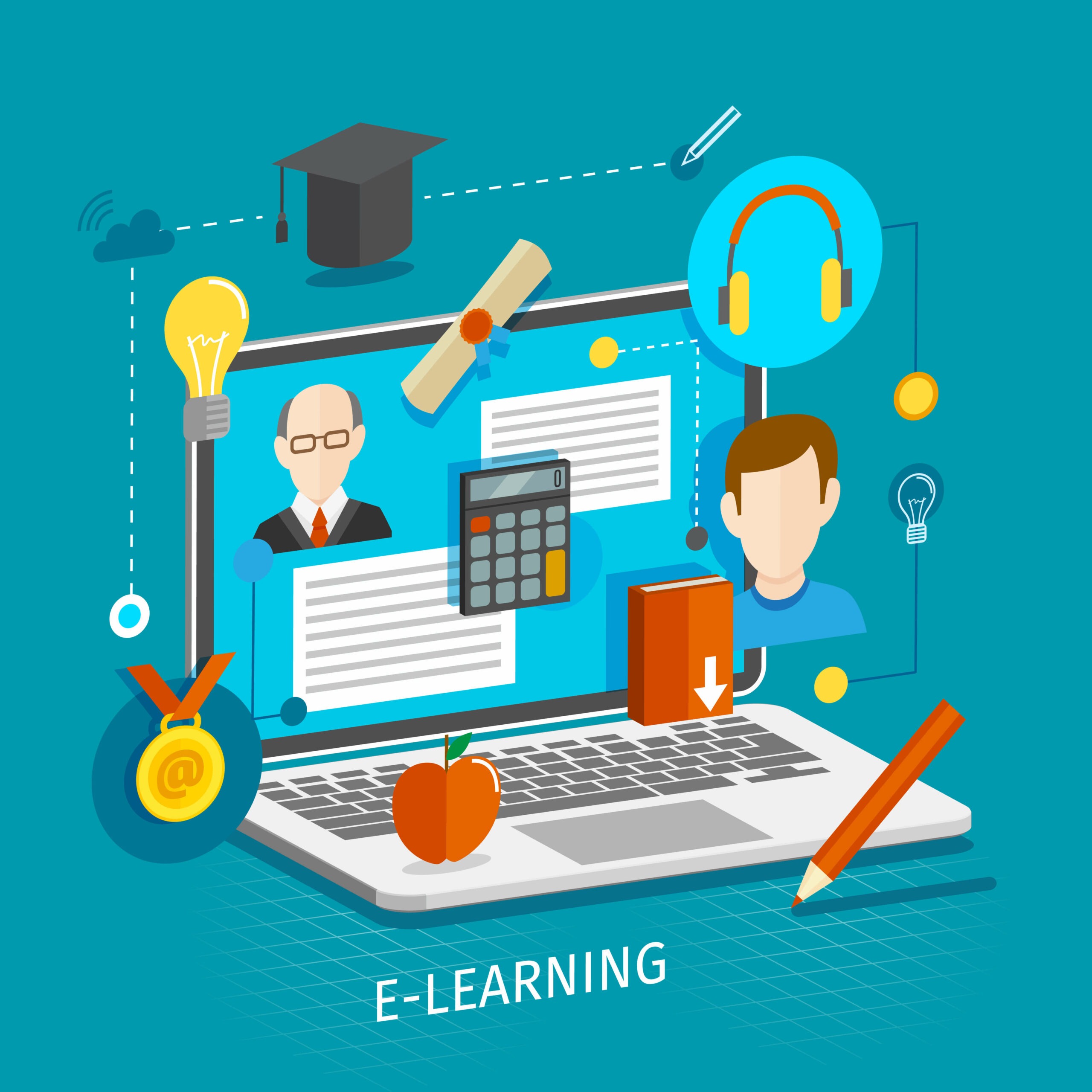What if your classroom could change with each lesson? That’s the magic of AI in education. The AI education market is expected to reach $20 billion by 2027, with nearly half of schools using AI tools. In addition, 86% of teachers say AI improves the learning experience.
- Are you interested in learning management system development?
- Want to know the impact of AI on education?
- Have to explore the benefits of Artificial intelligence in education?
- Whatever the reason is, this blog explores how AI is influencing education and why it’s becoming essential in classrooms and online courses.
Let’s discuss it in detail!
The Current State of AI in Education
Many classrooms now use AI tools to help with lessons, tests, and keeping students engaged. For instance,
- Google Classroom lets teachers assign tasks and check how students are doing, thanks to AI that analyzes student data.
- Online platforms like Duolingo personalize learning by adjusting lessons based on how each student performs. If a student struggles with a topic, the app makes it easier or harder to match their needs.
- Teachers can see which areas students find difficult and change their lessons to help them. This makes learning better for everyone.
As AI keeps getting better, its importance in education grows. It helps with teamwork and communication in the classroom. Many people believe that using AI in schools is a great idea, as it makes learning more effective and accessible for all students.
Upgrade Your Customer Experience!
Learn How AI-Powered Chatbots Can Boost Engagement And Conversions.
AI and Chatbot Apps7 Benefits of AI in Education
Just like AI uses in sports, AI is also changing how students learn and how teachers teach. Here are seven key benefits of AI in education, with examples and statistics to show their impact.
Personalized Learning Experiences
AI can create lessons that fit each student’s needs and learning speed.
For instance, DreamBox Learning is a math program that adjusts its questions based on how well students answer. This approach helps students grow individually and boosts their motivation as they can see their progress in real time.
Instant Feedback for Continuous Improvement
AI provides quick feedback on assignments, which helps students learn better. AI tools like Grammarly give real-time tips on grammar and style while students write. This instant response helps students fix mistakes, making them feel more confident and reinforcing their understanding.
Time-Saving for Teachers Through Automation
AI saves teachers time on tasks like grading and organizing schedules. Tools such as Classcraft automate these routine tasks, allowing teachers to focus more on interacting with students. This extra time helps create a lively and engaging learning environment.
Access to Diverse Educational Resources
AI opens up a wide range of educational resources that meet different learning needs.
For example, Khan Academy uses algorithms to suggest lessons based on how students perform. This access allows students to take charge of their learning, exploring subjects at their own pace.
Engaging Learning Experiences Through Interactivity
AI makes learning more fun and engaging with interactive experiences.
Platforms like Nearpod use gamification to make lessons exciting. By adding these interactive elements, teachers can create a classroom that encourages students to participate and enjoy learning.
Data-Driven Insights for Educators
AI helps teachers analyze student performance data, allowing them to spot trends and adjust their teaching methods. Tools like BrightBytes provide insights into student progress, helping teachers identify strengths and areas needing improvement.
Schools that use data-driven strategies help educators make informed decisions that benefit learning.
Preparing Students for Future Job Markets
AI in education prepares students for future careers. Programs like Codio teach coding through hands-on AI experiences, giving students essential skills. Schools that adopt AI are not just improving education—they are also preparing students for the job market ahead.
Also Read: Benefits of Learning Management System
How AI is Revolutionizing Learning?
AI is making significant strides in higher education and eLearning. This would enhance how students learn and interact with course materials.
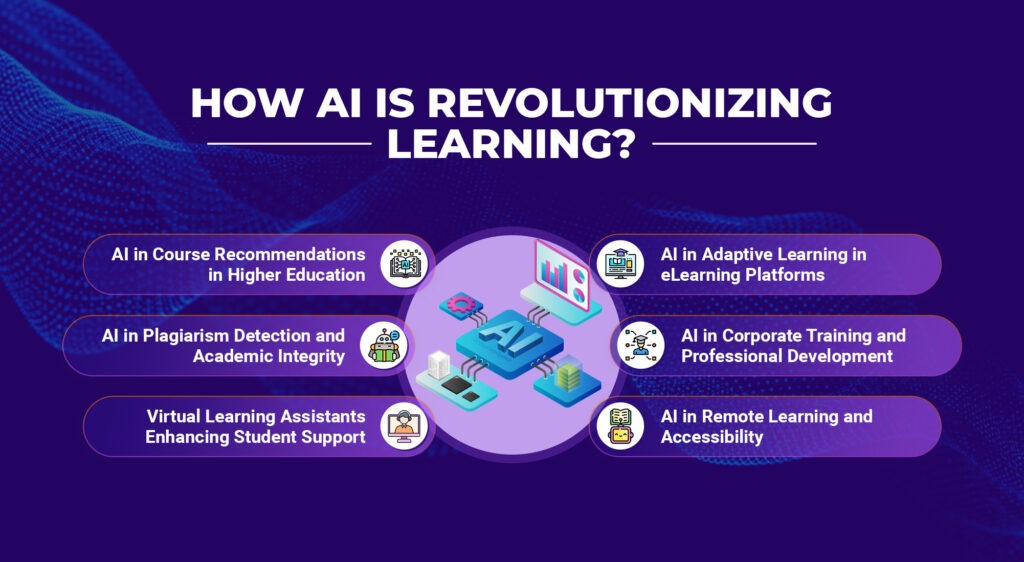
AI in Course Recommendations in Higher Education
AI is changing how students choose their courses in higher education. Schools like Georgia State University use AI to provide personalized course recommendations.
By looking at students’ past grades and future goals, AI helps direct them to the classes that are right for them. This customized approach has boosted graduation rates, showing how impactful AI in education can be.
With customized advice, students can make better choices about their studies.
AI in Plagiarism Detection and Academic Integrity
Plagiarism detection is essential in education, and AI plays a big role here. Tools like Turnitin use AI to find copied content in student work. This helps keep academic integrity by encouraging original thinking.
By promoting honesty, AI helps uphold the standards that schools expect.
Virtual Learning Assistants Enhancing Student Support
AI-driven virtual learning assistants are changing how students get help in higher education. Platforms like Coursera use AI to provide real-time support during online classes. These assistants can answer questions, help with tough topics, and encourage discussions among students.
This kind of immediate support makes learning more interactive, especially in remote settings. AI in classrooms boosts both learning and student confidence.
AI in Adaptive Learning in eLearning Platforms
In the eLearning industry, AI customizes course content to fit each learner’s needs. For example, Edmodo uses AI to check how students are doing and adjust the materials for them.
This personalized approach allows students to learn at their own pace, making the experience more enjoyable.
Adaptive learning can improve retention rates by 20%.
AI in Corporate Training and Professional Development
AI is also changing corporate training and professional development. Companies like IBM use AI to create customized training programs that pinpoint employees’ skill gaps. These customized programs suggest specific courses to improve knowledge and performance.
A McKinsey report found that organizations using AI in training saw a 15% increase in productivity.
By using AI, businesses can ensure their employees are ready for future challenges. see the impact of AI in real estate businesses.
AI in Remote Learning and Accessibility
AI technologies have greatly enhanced remote learning experiences. Platforms like Zoom include AI features that improve video quality and offer real-time transcription, making online classes more accessible. These advancements help meet various learning needs, ensuring all students can participate fully.
The impact of AI on education is clear; it fosters a more inclusive environment, helping to bridge gaps caused by distance.
As AI continues to grow, its influence on the education industry will expand. This may lead to innovative solutions that benefit learners everywhere.
10 AI-Powered Learning Tools Revolutionizing Education
| AI Tool | Description | Key Feature |
| ChatGPT | An AI assistant for instant answers and explanations on various topics. | Provides immediate support for problem-solving. |
| Khan Academy | Offers personalized learning experiences based on student performance. | Adapts lessons to student strengths and weaknesses. |
| Duolingo | A language-learning app that customizes lessons to individual learning speeds. | Uses algorithms for targeted language practice. |
| Grammarly | Writing assistant that gives real-time feedback on grammar and style. | Enhances writing skills through immediate suggestions. |
| QuillBot | Tool for paraphrasing and summarizing text for clarity and originality. | Helps avoid plagiarism and improve writing style. |
| Cognii | AI-powered tutoring that engages students through natural language conversation. | Offers interactive questions for deeper learning. |
| Carnegie Learning | Provides adaptive math instruction based on individual learning styles. | Customizes practice problems for targeted support. |
| Brainly | A collaborative platform where students can ask and answer questions together. | Encourages peer-to-peer learning and problem-solving. |
| Udemy | Online learning platform that recommends courses based on user interests. | Personalized course suggestions for skill development. |
| Coursera | Offers high-quality online courses with AI-driven recommendations for further learning paths. Making an app like Coursera can help you build a vast educational environment. | Analyzes user behavior for relevant course suggestions. |
Education App Development: How to Develop an AI Learning App?
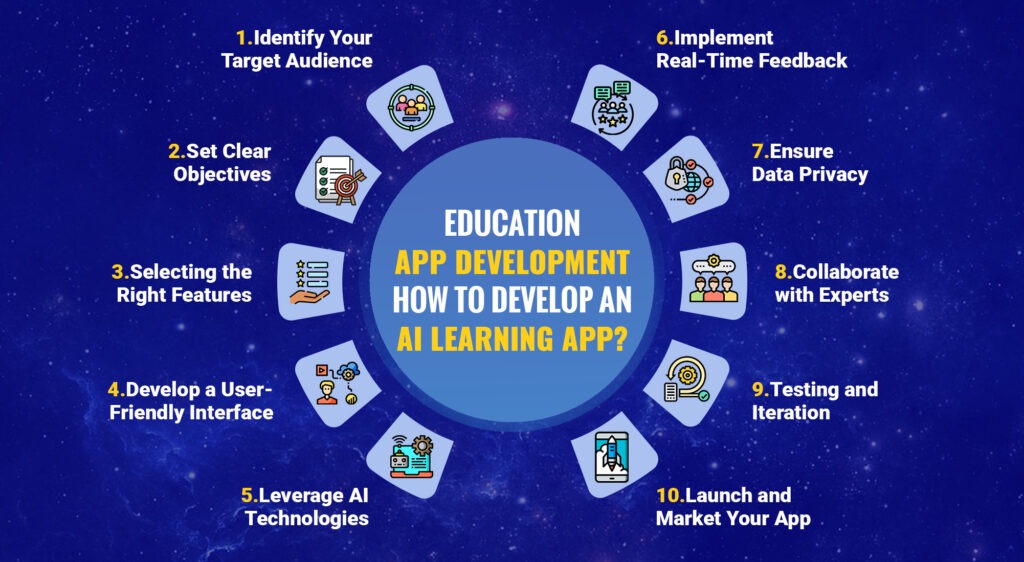
Identify Your Target Audience
Knowing your audience is key to creating a successful AI learning app with effective learning management system. Follow these steps:
- Who Are They? Decide if your app will serve students, teachers, or workers.
- Use surveys to learn what users want.
- Build user personas that show different needs and goals.
- Include features for users with disabilities and language options like AI programming languages.
- Look for things missing in current apps to make yours unique.
Set Clear Objectives
Clear goals help your app provide value. Here’s how to set them:
- Determine if your app will teach new subjects, improve skills, or help in job training.
- Ensure your app aligns with school requirements.
- Aim for goals that enhance learning and user happiness.
- These objectives will keep your development team focused on what matters.
Selecting the Right Features
Picking the right features is vital for engagement. Consider these:
- Use algorithms to adapt content to user progress.
- Include videos, quizzes, and games to keep users engaged.
- Provide dashboards to show users their achievements.
- Enable discussions so users can connect and learn together.
- Allow access to content without the internet to help users in low-connectivity areas.
Develop a User-Friendly Interface
A simple interface makes your app successful. Here are some tips:
- Keep the design clean and avoid clutter.
- Use familiar icons and buttons for quick access.
- Make sure the app works on phones, tablets, and computers.
- Test with real users to gather feedback before launching.
- Provide guides to help users learn how to use the app easily.
Leverage AI Technologies
Using AI improves user experience. Here’s how:
- Use AI to understand how users interact and adjust content.
- Let users engage with voice commands or text.
- Use AI to recommend resources based on past usage.
- Offer real-time assessments to show strengths and weaknesses.
- Suggest courses based on user interests and activities.
Implement Real-Time Feedback
Giving immediate feedback keeps users engaged:
- Alert users after tests to show what they did well and where they can improve.
- Use AI to adjust lessons based on performance, offering more help if needed.
- Provide instant results on quizzes to reinforce learning.
- Use notifications to motivate users about their progress.
Ensure Data Privacy
Protecting user data is crucial. Here’s what to do:
- Use encryption and safe servers to keep data safe.
- Clearly explain how you collect and use data.
- Protect user identities by removing personal details from data used for analysis.
- Focus on data privacy to gain user confidence.
Collaborate with Experts
Working with app development professionals like AppVerticals can improve your app.
Here’s how:
- Partner with teachers to ensure your app meets educational standards.
- Collaborate with AI experts to use technology effectively.
- Work with those who understand educational apps for a better user experience.
- Set up sessions with your team and experts to keep improving the app.
- Attend conferences to meet industry professionals and gain insights.
Testing and Iteration
Testing and adjusting your app is key:
- Before launching, have a small group test your app for feedback.
- Use suggestions to make changes that improve the app.
- Track how users engage and which features they like.
- Keep the app fresh with updates to fix bugs and add new features.
Launch and Market Your App
Launching and marketing your app is crucial for success:
- Identify your target audience and select marketing channels.
- Use of AI in social media is also booming. It is better to use social media to create excitement about your app.
- Partner with education influencers to reach more people.
- Create blog posts and videos explaining how AI can improve education.
- Give discounts or free trials to attract new users.
- Encourage user reviews and share positive feedback to attract more downloads.
By following these steps, you can create a user-friendly AI learning app that meets educational needs and stands out in a crowded market.
Also Read: How to develop a learning management system?
Estimated Educational App Development Cost
| Complexity Level | Description | Estimated Cost Range | Features |
| Basic | Simple app with essential features | $10,000 – $30,000 | User registration, content display, basic quizzes |
| Intermediate | More interactive features for user engagement | $30,000 – $80,000 | Video integration, user profiles, progress tracking |
| Advanced | Comprehensive app with advanced functionalities | $80,000 – $150,000 | AI-driven learning paths, gamification, analytics |
Empower Your Students With Personalized Learning
We Develop AI learning Apps That Enhance Engagement And Boost Academic Performance.
Make A Customized LMSThe Future of AI in Education
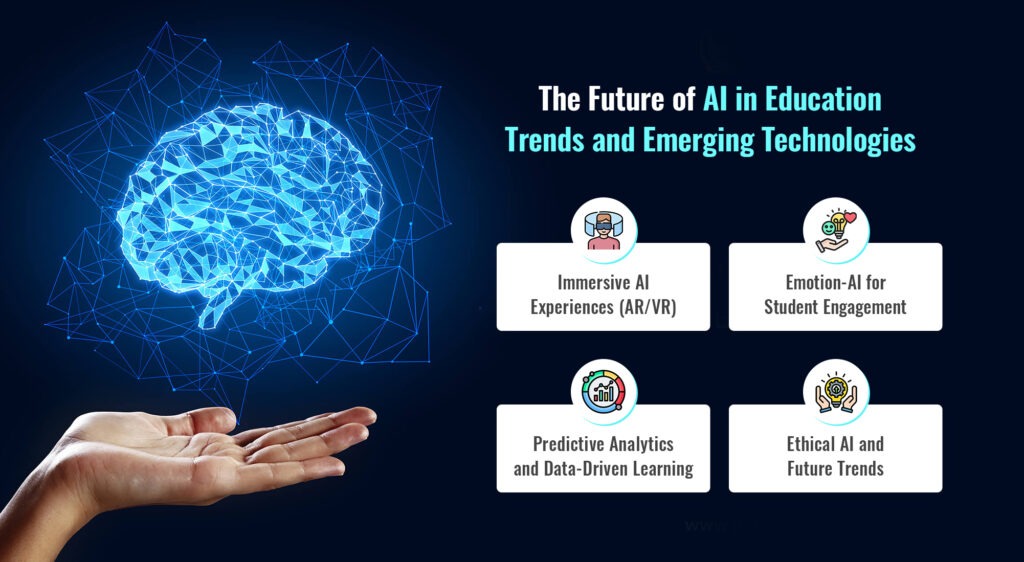
Immersive AI Experiences (AR/VR)
AR and VR are changing how students learn in exciting ways. For example, in a biology class, students can see 3D models of the human body. This makes complex topics easier to understand. In medical training, VR allows students to practice surgeries without any risk.
Schools using these technologies report higher engagement and better learning outcomes.
Emotion-AI for Student Engagement
AI can also read students’ emotions through facial expressions. If a student looks confused, the system can alert the teacher. This lets teachers adjust lessons to meet students’ needs.
By using this technology, schools can help students stay engaged and feel supported.
Predictive Analytics and Data-Driven Learning
Predictive analytics helps teachers see who might need extra help. By analyzing past performance and attendance, AI can spot students at risk of falling behind.
This allows teachers to offer support early on, which boosts success rates. Schools using data-driven strategies often see better results for their students.
Ethical AI and Future Trends
As AI grows in education, we must think about ethical use. Questions like “Should AI be used in schools?” are important. The aim is to improve learning while keeping students safe.
Looking ahead, we can expect more personalized learning experiences and AI-driven tutoring, helping students succeed in a digital world.
Wrapping It Up!
AI is changing education in many exciting ways. It helps create engaging learning experiences, such as through AR/VR and emotion-reading technology. These tools allow teachers to personalize lessons and keep students interested. AI also offers valuable insights through predictive analytics, helping identify students who may need extra support.
However, while AI in education has many benefits, we must blend it with traditional teaching methods. This balance ensures that all students feel included and supported. Looking ahead, AI promises even more innovation, making learning personalized and effective for everyone.
The future of AI in education is bright and filled with opportunities for growth and success.
FAQs – AI in Education | Learning Management System
1. How can AI contribute to inclusive education?
AI creates inclusive learning by offering personalized plans, speech tools, and content suited to different needs. It helps students with disabilities engage better through adaptive technology.
2. How can AI be used in education?
AI supports learning with adaptive platforms, AI tutors, quick feedback, and data-driven changes to lessons. This will help track student progress.
3. Why is AI important in education?
AI makes learning personalized, boosts engagement, and reduces admin work. This can prepare students for tech-driven jobs.
4. What technology is key for personalized learning?
AI is crucial for personalizing learning. It uses algorithms to customize lessons for each student’s speed, style, and needs. This ensures students get the support they need, whether it’s more practice or advanced topics. AI also helps teachers by giving insights into student progress.
5. Should AI be used in schools?
Yes, AI in education is more engaging and customized to individual needs. It automates tasks like grading, freeing up teachers to focus on students. However, it’s important to ensure fair access, ethical use, and human oversight to maximize benefits for all learners.
6. How can LMS apps improve online learning experiences?
LMS (Learning Management System) helps make online learning better. It gives teachers and students one place to manage courses, track progress, and interact. With custom LMS apps, students can have their own learning paths, use videos and quizzes, and get instant feedback.
7. What are the key features of a successful educational app?
A good educational app should be easy to use, help students learn at their own pace, and have fun activities like quizzes and videos. It should also provide instant feedback and track progress. AI-powered tools can help students learn better and stay motivated.

